The good, the bad and the drunk: Five highs and five lows of the Turner Prize
2 December 2016
Ahead of this year's Turner Prize award, critic and broadcaster WALDEMAR JANUSZCZAK picks his best - and worst - moments from 30 years of the infamous art prize, and we tell the back stories of the winners and losers.

Waldemar getting in the mood for his Artsnight take on 30 years of the Turner
5 of the Best
1. "Rachel Whiteread winning in 1993 with House, a full-size plaster cast of a Victorian terraced house. The YBAs had arrived."

Rachel Whiteread and House, December 1993 | Getty Images
Whiteread's work consisted of a concrete cast of the inside of an entire Victorian terraced house, made before the building was knocked down by Tower Hamlets London Borough Council. It was situated at its original location of 193 Grove Road in East London.
Ironically, the work was itself controversially demolished by the council in January 1994, despite a motion in Parliament by local MP Mildred Gordon to have it preserved. The artist was present when the bulldozers moved in; the driver of one of these quipped to the assembled press, "It's not art, it's a lump of concrete".
2. "Grayson Perry receiving the award in 2003 – the first transvestite potter to win."
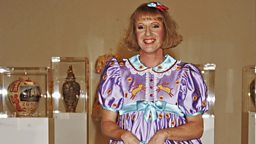
Grayson Perry at the 2003 award ceremony, held at the Tate Gallery, London, 7 December 2003 | Getty Images
Accepting the Prize, Perry said, "Well, it's about time a transvestite potter won the Turner Prize. I think the art world had more trouble coming to terms with me being a potter than my choice of frocks."
His illustrated vases included We've Found The Body Of Your Child, which showed a baby lying helpless on the ground while its mother is apparently restrained by a gang, and Boring Cool People.
3. "Damien Hirst triumphing in 1995. He should have won in 1992, but history wasn’t ready yet."

An exhibition copy of Mother and Child (Divided) on display at Hirst's Tate Modern retrospective in 2012 | Getty Images
Hirst was first nominated for The Physical Impossibility of Death in the Mind of Someone Living, featuring a preserved shark, in 1992. The work for which he won, in 1995, features four glass-walled tanks containing the two halves of a cow and calf, each bisected and preserved in formaldehyde solution. It was titled Mother and Child (Divided).
Hirst said while accepting the Prize, "It’s amazing what you can do with an E in A-Level art, a twisted imagination and a chainsaw."
Photo: Damien Hirst in front of his artwork, The Physical Impossibility of Death in the Mind of Someone Living, at Tate Modern in 2012 | Getty Images
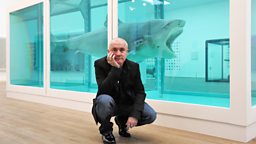
4. "Tracey Emin getting spectacularly drunk on the telly in the post-Turner debate in 1997. Terrible debate. Great telly."
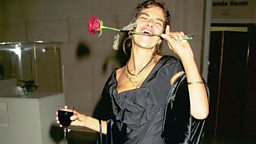
Another Turner awards bash, another glass of wine: Tracey Emin poses at the 1999 Turner Prize Awards at the Tate Gallery | Getty Images
Here's Tracey talking to Paul Merton on Room 101 about turning a rather dull debate into her own piece of performance art, and her limited memory of it. Luckily there is footage of the debate, which be warned contains some strong language and a lot of very slurred speech. And Waldemar is there. Tracey also tells Paul the story behind the rather disturbing robotic-looking splint she is wearing on her finger at the debate.
5. "Gillian Wearing winning in 1997 with her 60 minute film of a squad of policemen doing the mannequin challenge!"

Gillian Wearing at the Frieze Art Fair, 2011 | Getty Images
Gillian Wearing's win in 1997 may have been partly responsible for her friend Tracey Emin's exuberance that night. Wearing's winning entry, Sixty Minutes' Silence, was at first sight a lifesize photo of 26 police officers, which the viewer eventually realises is a video - the officers are trying to remain still and quiet for the full hour but the strain gradually builds and they shuffle and flex.
The Telegraph's Richard Dorment described how one officer succeeded in remaining near-motionless until told that time was up. He then "lets out a yelp of relief that you can hear all over the gallery. The moment is like a dam bursting. His final, cathartic, joyful cry is one of the great moments in the history of recent British art."
Five of the worst
1. "Martin Creed winning in 2001 with a light that went on and off. Yawn, yawn, yawn!"
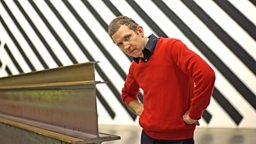
Martin Creed pictured at the launch of his solo exhibition at Hauser & Wirth Coppermill, London, in May 2007 | Getty Images
One successful artist, Jacqueline Crofton, felt so strongly about Creed's somewhat minimalist work, The Lights Going On and Off, that she took it upon herself to pelt it with eggs.
Crofton said: "At worst, The Lights Going On And Off is an electrical work. At best, it is philosophy... Someone had to make a stand." She said later that the idea for her action came to her in a dream. The Tate was not impressed and issued a lifetime ban.
2. "Grenville Davey beating Damien Hirst in 1992. Grenville who? Exactly."

Grenville Davey's work for London's Olympic Park in 2012, part of Art in the Park
Annual newspaper columns taking aim at the Turner, and the type of art it is perceived to promote, are nothing new. In 1992 the Wall Street Journal joined in with a piece headlined, "Brit Art-Prize Fiasco: Grenville Who?" A broadside at a gaggle of British art prizes, it went on to state, "Quite amazingly, the famously philistine British public is completely caught up in the frenzy."
3. "Assemble winning last year. Nice people. But they are architects, not artists."
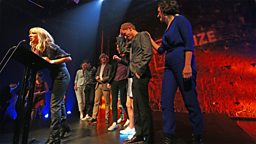
The Assemble architecture collective pictured with Kim Gordon at the Turner ceremony at Glasgow's Tramway, December 2015
The Turner is often presented by a well-known face. In 2015, American musician Kim Gordon, who was in New York band Sonic Youth for as long as the Turner has been around, presented the Prize to the Assemble collective of designers and architects.
4. "Bill Drummond and his so-called K Foundation awarding Rachel Whiteread £40,000 in 1993 as ‘The Worst Artist’. Silly gesture."
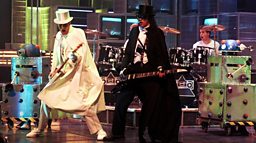
Is this art? Jimmy Cauty and Bill Drummond in another musical incarnation, The Timelords, perform Doctorin the Tardis on Top of the Pops, 1988
The K Foundation was an art offshoot of Cauty and Drummond's band KLF, founded when they 'retired' from the music industry. It mounted several pranks and stunts, including around the 1993 Turner when several newspaper adverts appeared urging readers to "Abandon all art now." Adverts were also aired on Channel 4 during the Turner awards programme.
Whiteread reluctantly appeared outside the award ceremony at the Tate to receive the K Foundation award cash, having been informed it would otherwise be burnt. She said later, "I would have been blamed for having £40,000 burned in front of me. So I had to accept it."
5. "The Chapmans not winning in 2003. Grayson was good, but the Chapmans were better."
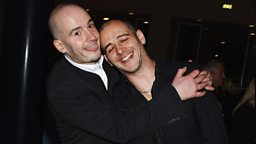
Jake and Dino Chapman at the award ceremony held at the Tate Gallery in London, December 2003
Critic Adrian Searle, writing in The Guardian, described the 2003 exhibition as "one of the best Turner displays I have seen".
The Chapmans' reworkings of Goya etchings using plastic figures and toy soldiers, and porno scenes with blow-up latex sex dolls were classically controversial Turner material and hence the favourites to win.
Turner Prize 2016
Morgan Quaintance assesses this year's nominees on BBC Four, Sunday at 21:30. With the help of the curator of this year's prize, Linsey Young, Morgan explores the work of each of the artists - watch preview clips below.
The winner of the Turner Prize 2016 is announced in a special live programme on the BBC News Channel, Monday at 21:30.
Related Links
More on the Turner Prize
-
![]()
What's the Turner Ever Done for Us?
Waldemar Januszczak looks back over three decades of critical acclaim, public outcry and artistic controversy
-
![]()
Jake Yapp vs The Turner Prize 2015
Comedian Jake Yapp delivers a one-take, satirical swipe at the shortlist
-
![]()
A parade of chancers?
Newsnight's culture correspondent Stephen Smith asks just what is the Turner good for?
More from BBC Arts
-
![]()
Picasso’s ex-factor
Who are the six women who shaped his life and work?
-
![]()
Quiz: Picasso or pixel?
Can you separate the AI fakes from genuine paintings by Pablo Picasso?
-
![]()
Frida: Fiery, fierce and passionate
The extraordinary life of Mexican artist Frida Kahlo, in her own words
-
![]()
Proms 2023: The best bits
From Yuja Wang to Northern Soul, handpicked stand-out moments from this year's Proms











